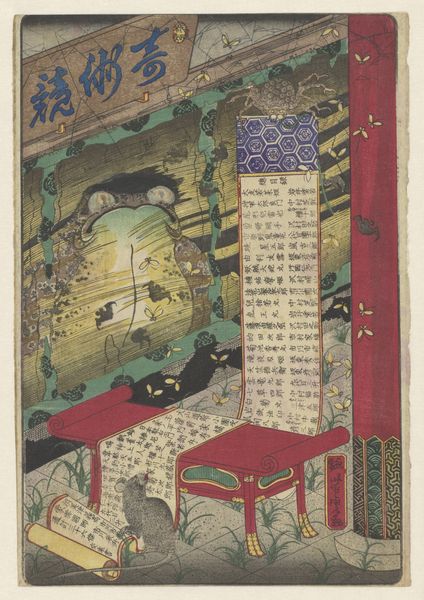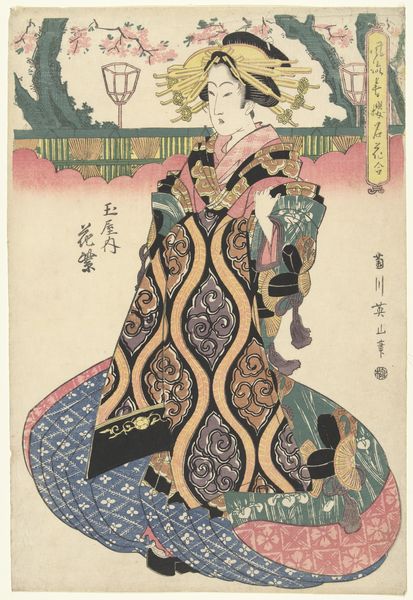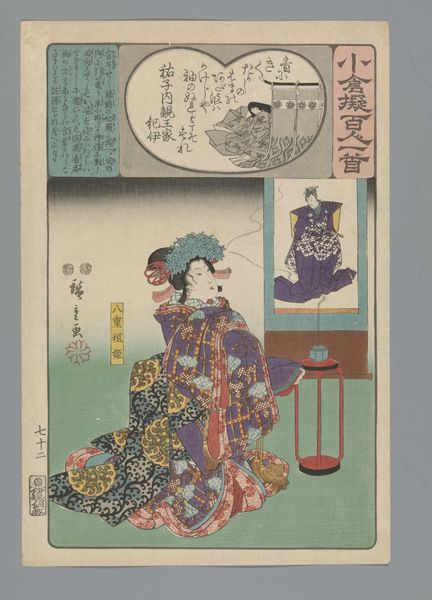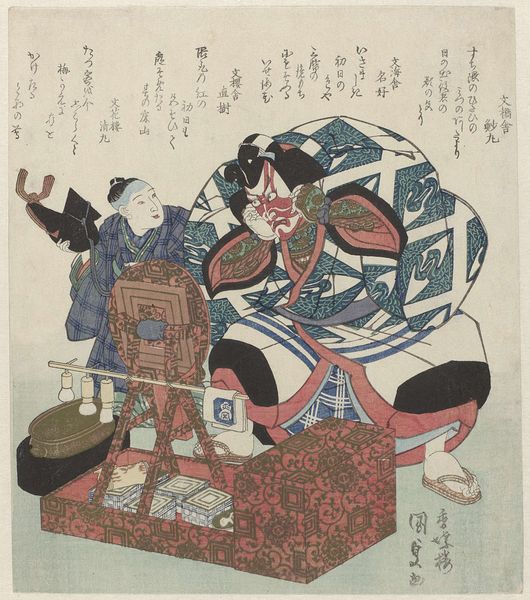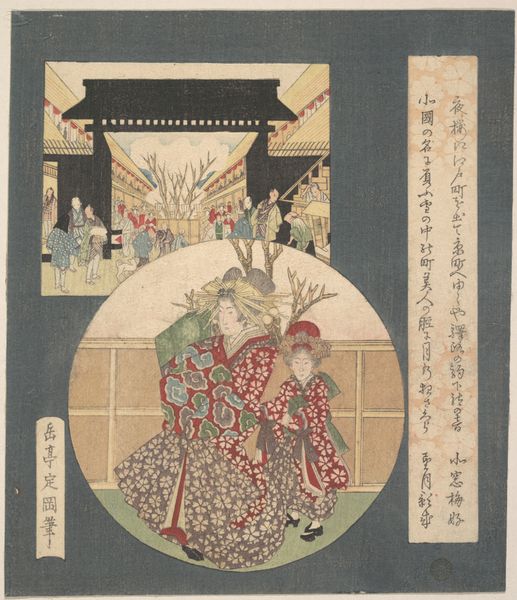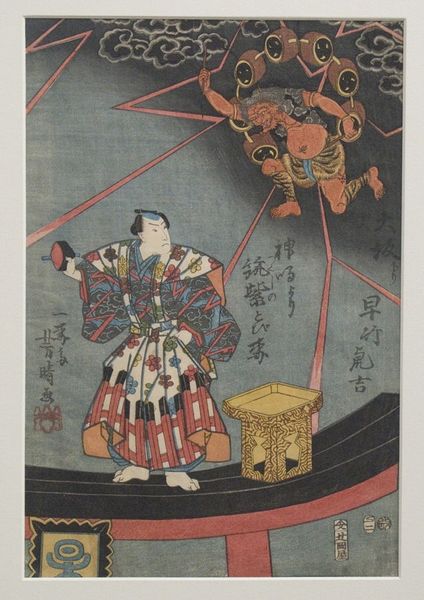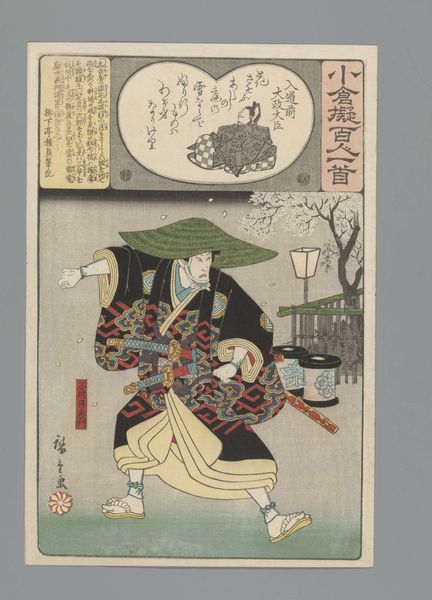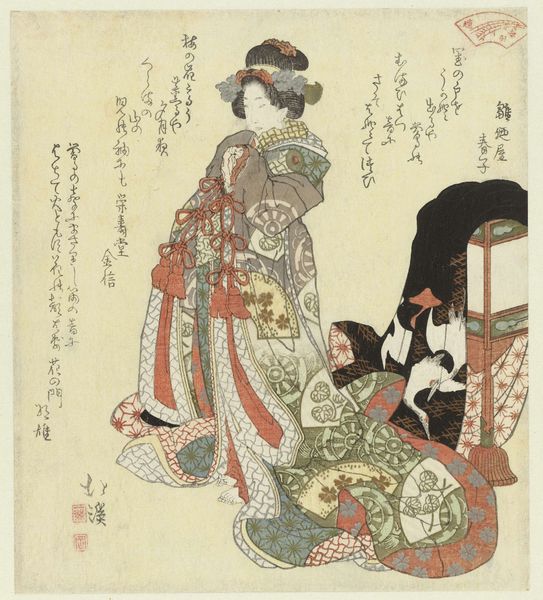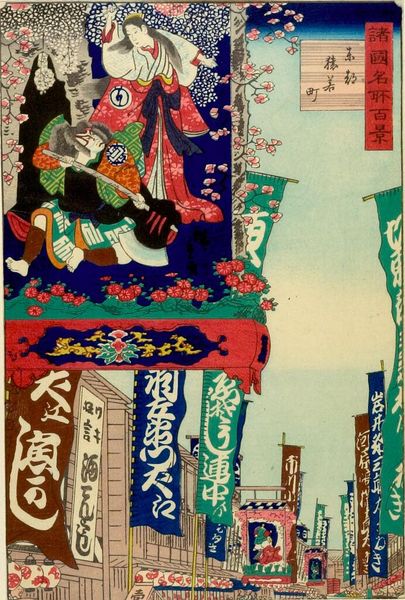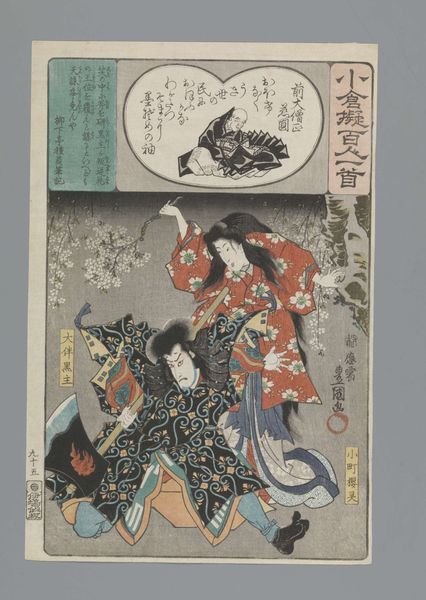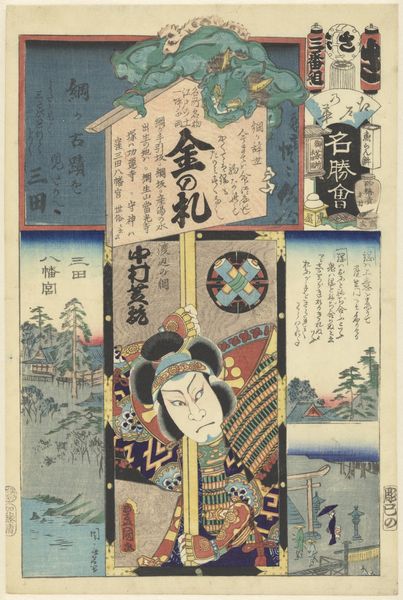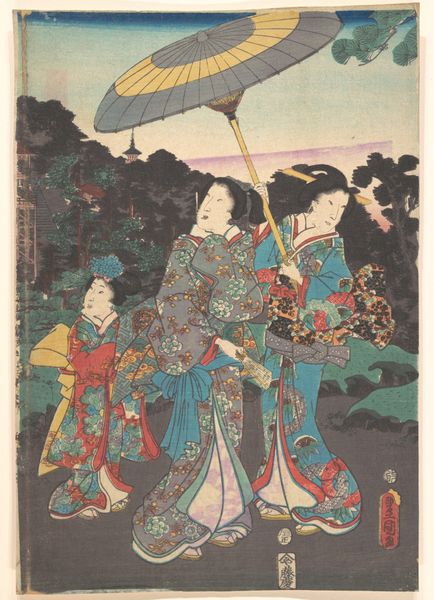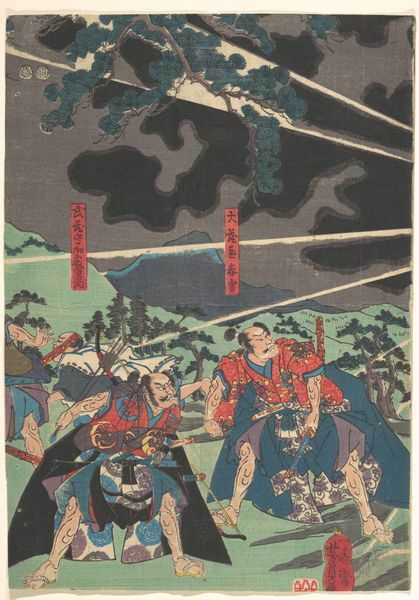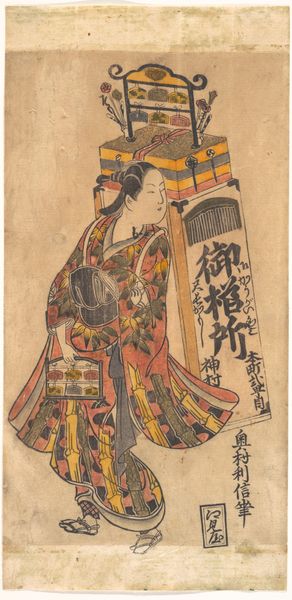
Dimensions: height 382 mm, width 264 mm
Copyright: Rijks Museum: Open Domain
Kasamatsu Shirô created this woodblock print, 'The great lantern of the Kannon temple in Asakusa', in twentieth century Japan. Temples like this were not just religious spaces but also social hubs, especially for those seeking community in rapidly changing urban environments. The image's meaning emerges from the symbolic weight of the Kannon Temple and the traditions that surround it. Asakusa was known as an entertainment district in the Edo period, and by the 20th century, it was a site of both tradition and modernity. Shirô's print invites us to consider the temple's place in the social fabric, a place where spirituality met everyday life. The lantern itself, emblazoned with bold characters, acts as a beacon, guiding worshippers and onlookers alike. To fully understand this artwork, we'd need to delve into historical archives, religious texts, and visual culture studies. This will allow us to uncover the layers of meaning embedded within this seemingly simple scene. Ultimately, this print reminds us that art is always shaped by the world around it, and that understanding its context is key to unlocking its secrets.
Comments
No comments
Be the first to comment and join the conversation on the ultimate creative platform.
